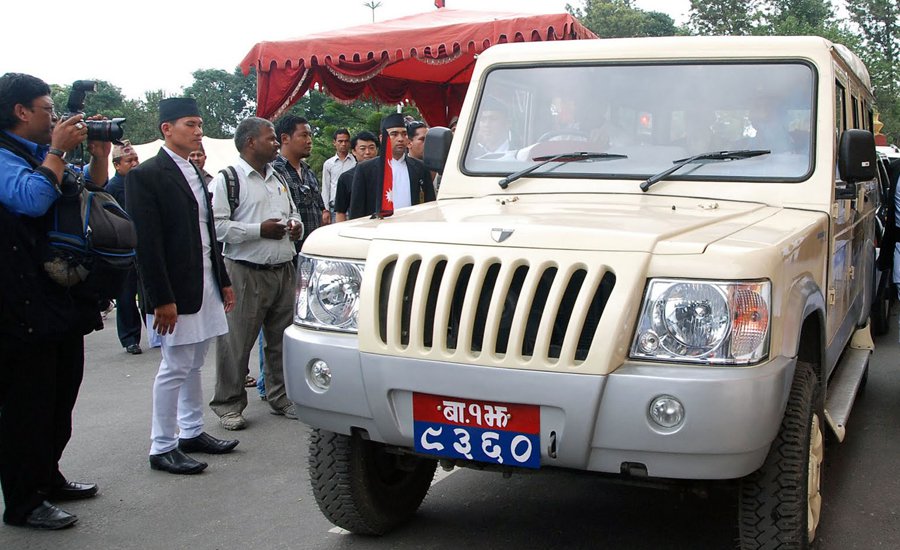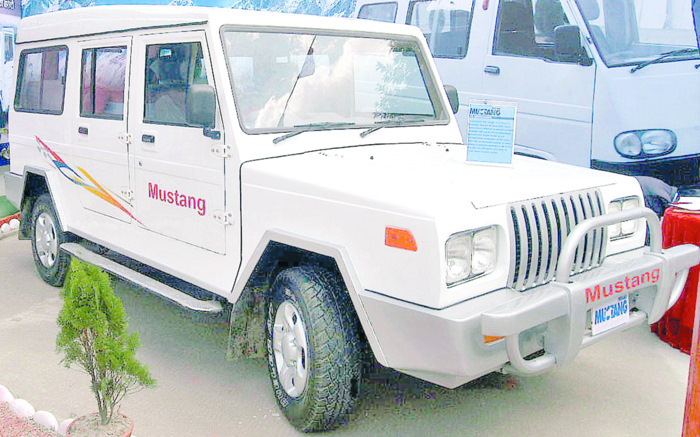
When you sit down with Prafulla Das and ask him about Nepal’s first diesel engine jeep, he gets emotional. Das, a former General Manager of Hulas Motors Pvt Ltd, was also the chief engineer of the jeep being produced by Hulas Motors, called Mustang.
“Let’s not reopen old wounds. Whenever I think about it, I feel a bit sad,” says Das.
Das, who spent around two decades to make a car or jeep here in Nepal, calls his ‘Mustang Dream’ the biggest mistake of his life.
“The wound has healed. I admitted that it was a big mistake. As a noble citizen, I wanted to something for the country, but sadly situations did not let me,” adds an emotional Das.
But after a while, Das opened up on his sad story adding that it could be a lesson to upcoming entrepreneurs.
The vehicle for all
The plan to produce a jeep in Nepal was started by the Golcha Group in 1998. Importing items from China and India, under the brand Hulas Motors, Das and other engineers started designing the jeep. Their plan was to produce at least 150 jeeps a year.
The jeep adored by people from both hills and the plains had started making a name for itself.
“People gave us a tagline back then – One Mustang follows dozer,” recalls Das, who shares that the slogan meant that wherever a dozer opened a road, a Mustang V2 jeep would not be far away.

Mustang V2 was quite reasonably priced too. It cost little over Rs 1.3 million and could accommodate up to 13 people.
With the jeep gaining popularity Das got recognised. He recalls the day when then Prime Minister Baburam Bhattarai came to his office.
“It was eight years ago. Director Surendra Golcha told me that PM Bhattarai wanted to use a Mustang jeep. It was over the moon when I heard the news but then I realised that it was not going to be easy. I had never built a car for a VVIP and then I started to get very nervous,” adds Das.
He adds that he knew that a car for a VVIP needed to have many facilities. First, it needed to be comfortable; second, it needed to be secure; and third, it needed to be fast. However, the jeep which was built for the people of the hills could only go as fast as 90 km/h.
“In that way, I knew that the jeep wouldn’t be of much use to the prime minister of Nepal. But he was adamant that he wanted us to build a car for him. And that is what we did,” he recalls.
After nearly two months, Das along with other engineers from Hulas Motors built an air-conditioned car fulfilling most regulations needed in a VVIP’s car and sent it to Bhattarai. They called it Mustang Max.
Bhattarai, who ruled the country for 20 months, used the jeep number Ba 1 Jha 9360. Das and his team’s creation then got more publicity.
The next level which they didn’t achieve
After gaining publicity, Hulas Motors then came up with the idea to produce another jeep, Hulas Bravo, designed especially for Nepali budget customers and Nepali roads. The jeep which could accommodate up to 11 people was being priced at Rs 2-Rs 3 million.
“Bravo was quite luxurious as compared to Mustang Max. The plan was to compete with imported vehicles which cost around Rs 6–10 million,” adds Das.
But before the idea bore fruit, Hulas Motors closed down in 2013.
The company closed down due to the government’s regulation, shares Das. He says that the Nepal government in 2012 decided to raise the emission standards which was at euro 1 from 2000 to euro 3 in 2013.
“The then Finance Minister Shankar Prasad Koirala in his budget speech said no one could register vehicles which were below euro 3 and with that statement he killed Hulas Motors.”
By the time, the government decided to raise its emission standards, Hulas Motors had already spent over Rs 8 million for the research and design on Hulas Bravo.
“The car still did not meet the emission standards, which is why we asked the government to let us go, assuring that we could meet their standards after two years or so. But the government didn’t listen to us. They said they could give us only one year.”
Das said the company tried many things, but no one in the government was willing to listen. After toiling hard for a year, the production of Mustang Max and Mustang V2 stopped. Hulas Bravo didn’t even get a chance to get on the road.

“Had the government shown us little sympathy, the made-in-Nepal cars would be plying the roads. However, that didn’t happen,” adds an emotional Das.
Das is still heartbroken at how the government’s decision ruined two decades worth of work done by him and his team. He still feels that had the government given the team two years, they would have worked doubly hard and could have maybe changed the landscape of transportation in Nepal.
“We had to dump the idea, our work and our dreams thanks to that decision.”
No space for innovations?
Das during his best years of his life had dreamt of changing the landscape of Nepal. With the help of Surendra Golcha, Das was nearly successful. But, looking back, Das feels that the country does not have a space for innovative minds.
“That is why we import everything. The government never promotes made-in-Nepal goods,” he adds.
He adds that the country will only move forward if leaders give importance to education and industrial sectors. He says that until favourable polices are not formed by the government, Nepali industries will never flourish.
“Had the government changed its policy when we were in operation, the things would have been different. But there is no point talking about it now.”
Why the government brought such a rule still puzzles Das.
“It is a question that will stay with me for life. A question whose answer I will probably never get.”


















